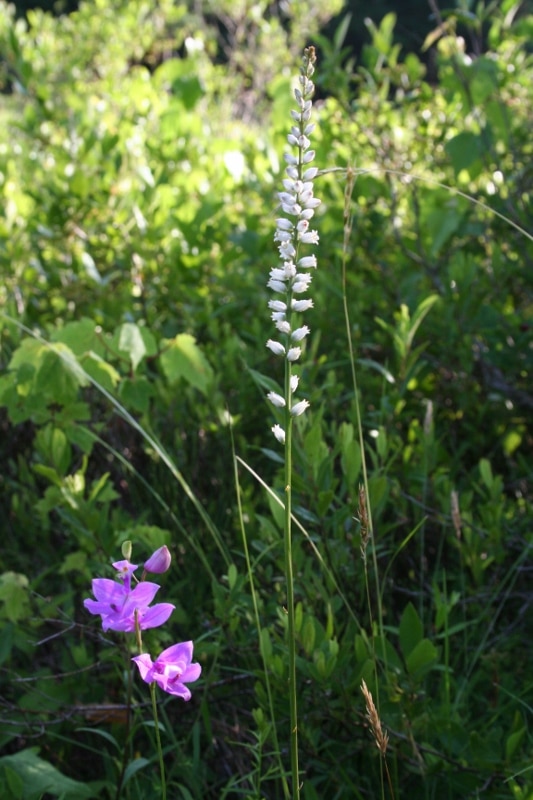I love this story, it is one I tell again and again. I first read it in the North Carolina Native Plant Propagation Handbook which was printed by the North Carolina Wildflower Preservation Society.
Oconee Bells, or Shortia is the mystery plant of the mountains of western North Carolina. It was first discovered by French botanist Andre Michaux in 1788. He brought pressed specimens back to France, some were labeled “unknown” and among these was a leaf and root of this plant.
In 1839 Asa Gray became intrigued with the specimen and recognized it as a new genus. He wrote a scientific description of the genus from the single specimen in France. He named it in honor of Dr. Charles Short, a botanist of Kentucky – Shortia, and gave it the species name galacifolia because it resembled galax.[lightbox link=”http://norcrosswildlife.org/wp-content/uploads/2016/04/shortia_galacifolia.oconee-bells1-e1461082685607.jpg” thumb=”http://norcrosswildlife.org/wp-content/uploads/2016/04/shortia_galacifolia.oconee-bells1-300×206.jpg” width=”300″ align=”left” title=”Oconee Bells” frame=”true” icon=”image” caption=””]
Gray began his search for Shortia high in the mountains of North Carolina and Tennessee. In 1842 Dr. Gray was appointed professor of natural history at Harvard University. For thirty-eight years on every field trip high in the mountains of North Carolina, Gray hunted for the elusive Shortia. He found many plants and published manuals on botany, but always the little specimen in Paris continued to haunt him.
On a day in April 1877 George Hyams went fishing in the Catawba River in McDowell County. His father was a botanist in Statesville, N.C. whose firm collected plants for pharmaceutical purposes. Nodding and swaying in the breeze were some charming, bell-shaped, waxy white flowers on slender stems, with irregular-toothed petals, growing from a rosette of wavy-margined, roundish, shiny evergreen leaves, similar to the familiar mountain galax. George decided to take a piece home to his father. Mr. Hyams did not recognize the plant but it looked so interesting that he sent a specimen to Dr. Gray at Harvard University for identification. Dr. Gray replied, “You have stumbled on what for many years I have tried so hard to find.”
Of the 25,000 botanical specimens that Gray classified during his life time, Gray asked that Shortia cover his grave at Cambridge, Massachusetts. In Gray’s life many honors had come to him but they were as naught compared to the discovery of the little mountain plant that Dr. Asa Gray named Shortia.
You can see Shortia galacifolia, or Oconee Bells, blooming here at the Norcross Wildlife Sanctuary now. Its first flowers opened just this week. Come see many of the early spring wildflowers that make this property so special.
Notes and Resources



